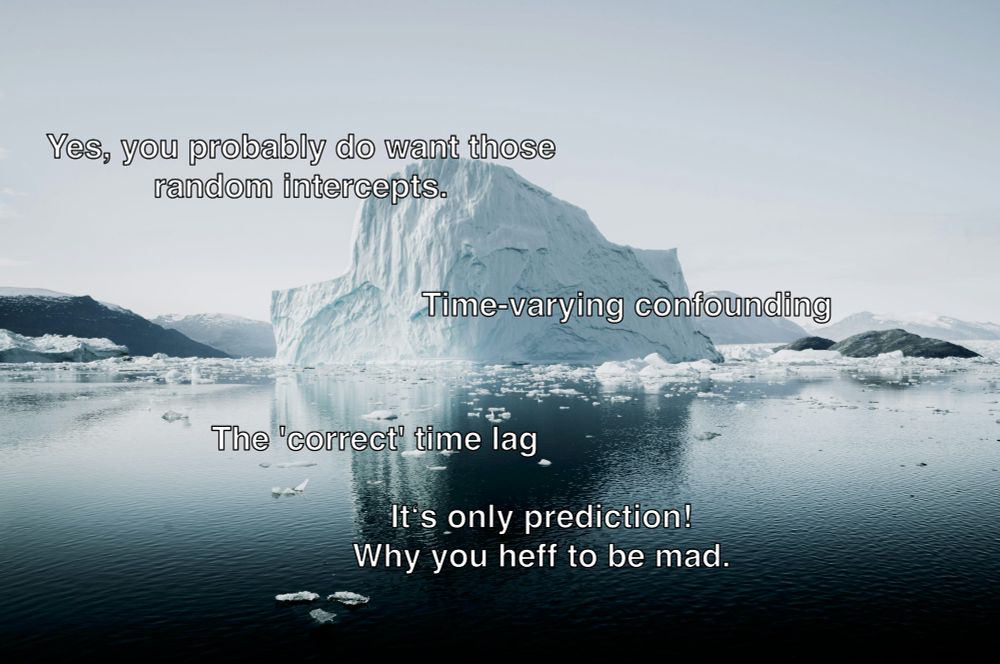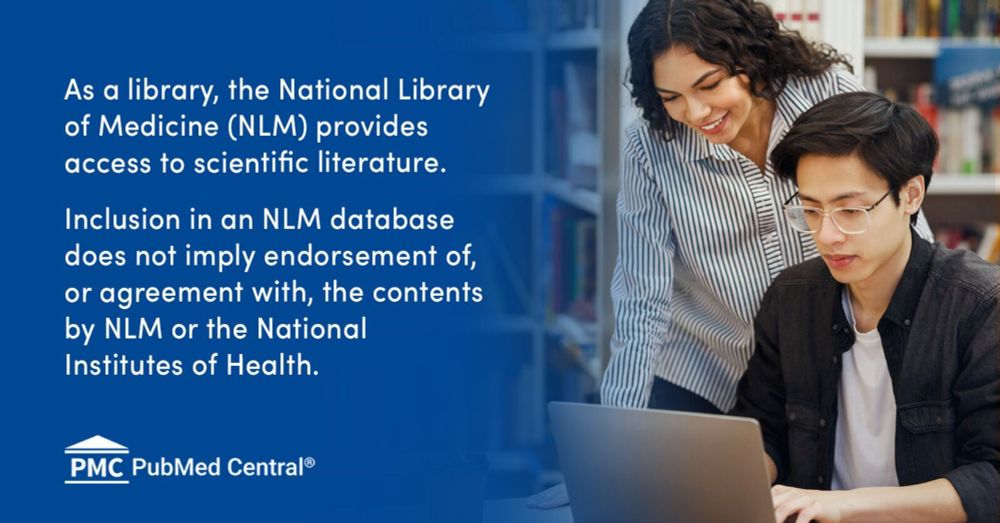So hard! When there is no cross-lagged effect in this data generating model, RI-CLPM estimates one, but when there *is* one effect, the ARTS model doesn't! Not sure the paper bears much on whether cross-lagged effects are rare, but def on our ability to use these models without external info.
03.10.2025 21:42 — 👍 0 🔁 0 💬 0 📌 0
OSF
Interested in models used to estimate lagged effects in panel data? We (@rebiweidmann.bsky.social, Hyewon Yang) have a new paper looking at patterns of stability and their implications for bias and model choice: osf.io/preprints/ps... [1/x]
19.09.2025 13:22 — 👍 21 🔁 12 💬 1 📌 4
Dag makhani: Causal inference and Indian cuisine
25.08.2025 17:43 — 👍 2 🔁 0 💬 0 📌 0
Collider effect in the real world!
25.08.2025 17:06 — 👍 2 🔁 0 💬 1 📌 0
Like, the effect of dropping a bouncing ball on the velocity of the ball over time is a weird oscillating function?
19.08.2025 15:55 — 👍 1 🔁 0 💬 0 📌 0
About 2/3 of the posts on this platform linking to the recent NYT article on null findings from Baby’s First Years have this reaction. You can search the headline and verify yourself!
www.nytimes.com/2025/07/28/u...
18.08.2025 20:54 — 👍 2 🔁 0 💬 0 📌 0
I used Paige’s first book in a class students with a wide range of previous exposure to and attitudes about behavior genetics, and they all seem to find it very interesting. Will probably try this one too!
09.08.2025 22:01 — 👍 1 🔁 0 💬 0 📌 0
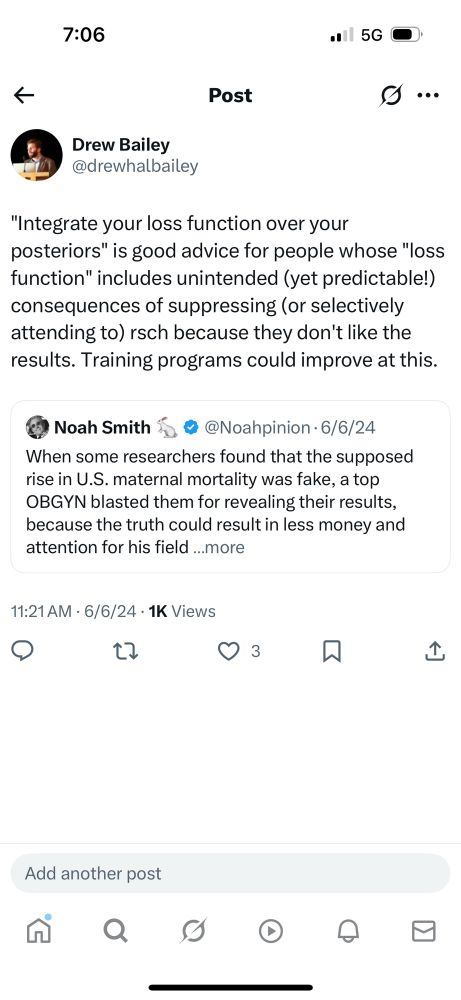 29.07.2025 02:07 — 👍 1 🔁 0 💬 0 📌 0
29.07.2025 02:07 — 👍 1 🔁 0 💬 0 📌 0
OSF
Random Intercepts and Slopes in Longitudinal Models: When Are They "Good" and "Bad" Controls?
or
Illusory Traits 2: Revenge of the Slopes
Led by Siling Guo, with Nicolas Hübner, Steffen Zitzmann, Martin Hecht, and Kou Murayama.
Comments welcome!
osf.io/preprints/ps...
25.07.2025 17:58 — 👍 12 🔁 5 💬 0 📌 0
Although field-specific authorship norms probably mostly just reflect the values of people in the field, I also think they can affect those values too. This seems like a good example! (I have some guesses about unintended consequences of tiny authorship teams too, btw.)
23.06.2025 14:14 — 👍 1 🔁 0 💬 0 📌 0
APA PsycNet
6) LCGAs never replicate across datasets or in the same dataset. They usually just produce the salsa pattern (Hi/med/low) or the cats cradle (Hi/low/increasing/decreasing).
This has misled entire fields (see all of George Bonnano's work on resilience, for example).
psycnet.apa.org/fulltext/201...
20.06.2025 19:05 — 👍 28 🔁 4 💬 6 📌 2
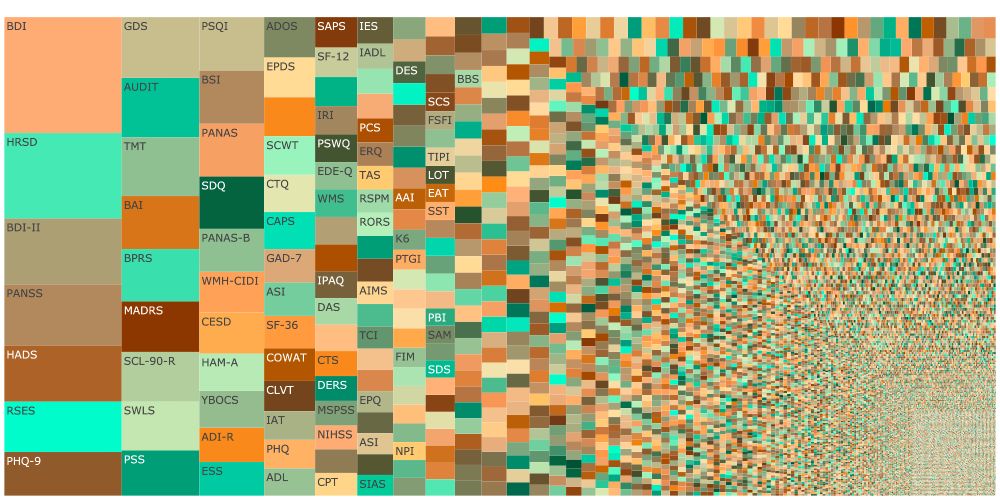
Treemap showing measurement fragmentation across subfields in psychology. Hill-Shannon Diversity 𝐷=1626.05
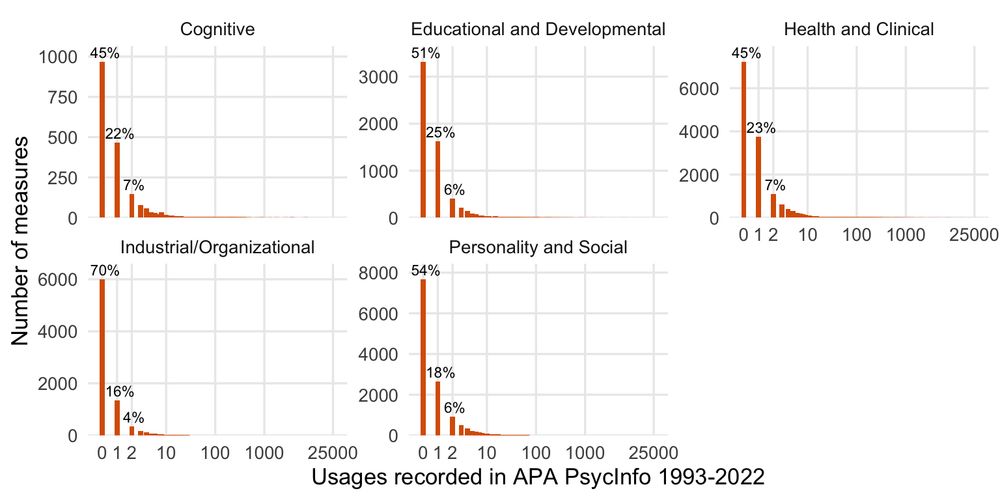
How often measures in the APA PsycTESTS database are (re)used according to the APA PsycInfo database: rarely, the majority are never reused.
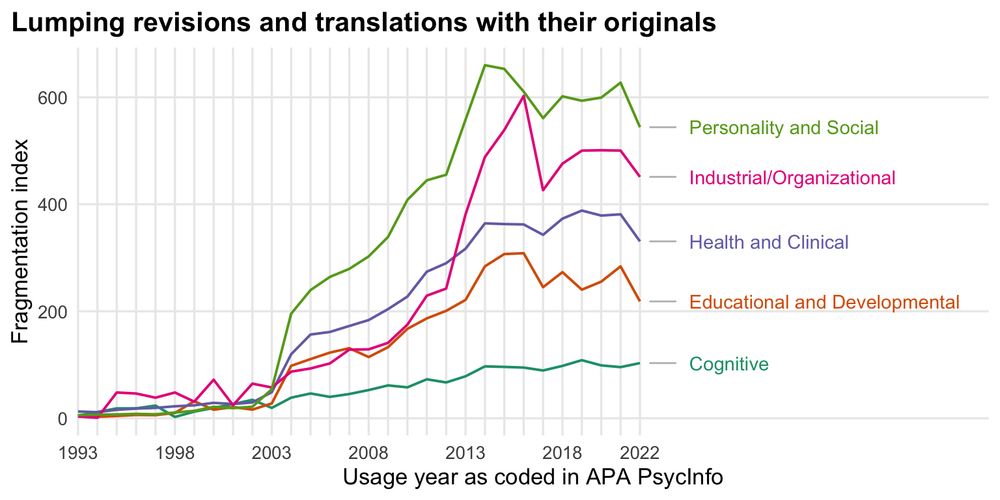
Our fragmentation index (Hill-Shannon diversity) over time across subdisciplines shows fragmentation rising.
Our paper "A fragmented field" has just been accepted at AMPPS. We find it's not just you, psychology is really getting more confusing (construct and measure fragmentation is rising).
We updated the preprint with the (substantial) revision, please check it out.
osf.io/preprints/ps...
13.06.2025 10:50 — 👍 149 🔁 59 💬 1 📌 3
But I really hope we get 10 more years of strong studies now on the effects of large increases in access on outcomes for "always takers" and especially for elite students. There are lots of good reasons to expect these effects should differ. (2/2)
11.06.2025 20:35 — 👍 1 🔁 0 💬 0 📌 0
I have seen lots of higher ed talks and papers in the last 10 years convincingly demonstrating that just making some cutoff (getting into a more selective college or major, not taking remedial classes) helps the marginal student. Great to see an emerging consensus. (1/2)
11.06.2025 20:35 — 👍 0 🔁 0 💬 1 📌 0
For every cause, x, there is some group of people (often disproportionately people who study x) who think the effects of x are way bigger than they are. Therefore, I think we are doomed to read (or worse, make) "Yeah, but the effect of x is small" takes forever.
11.06.2025 20:24 — 👍 0 🔁 0 💬 0 📌 0
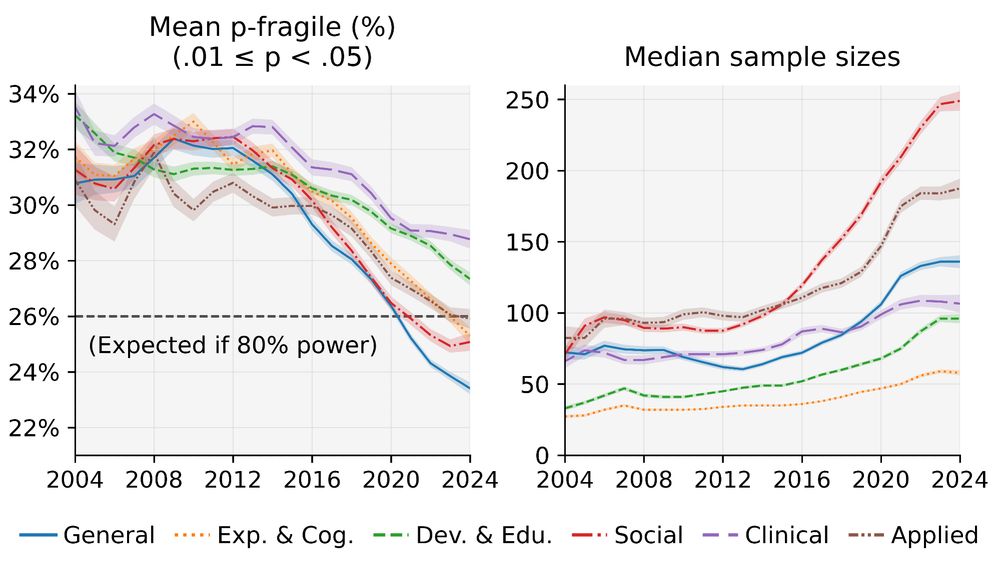
Mix of Figures 2 and 4 from the paper
I investigated how often papers' significant (p < .05) results are fragile (.01 ≤ p < .05) p-values. An excess of such p-values suggests low odds of replicability.
From 2004-2024, the rates of fragile p-values have gone down precipitously across every psychology discipline (!)
09.04.2025 13:15 — 👍 4 🔁 1 💬 1 📌 0
Hope to see at least one of these in each APS policy brief from now on!
15.05.2025 19:57 — 👍 1 🔁 0 💬 0 📌 0
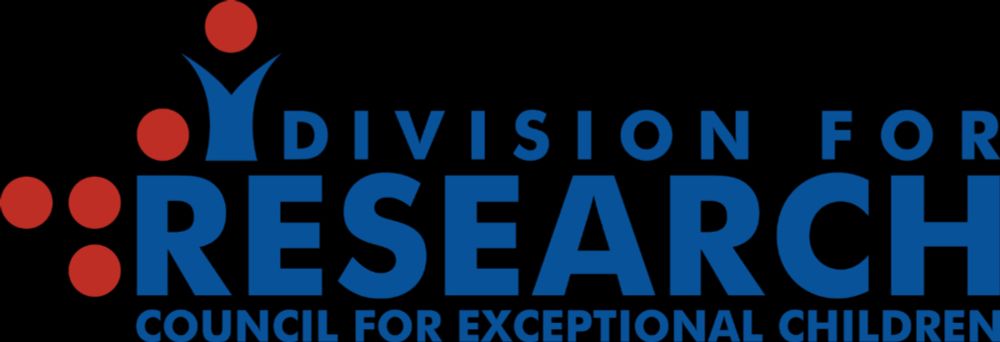
In Memory of Lynn Fuchs
Email from CEC Division for Research May 12, 2025 In Memory of Lynn Fuchs The field of special education lost a visionary and beloved leader with the passing of Lynn Fuchs on May 7, 2025. Her absenc
IN MEMORY OF LYNN FUCHS
The field of special education lost a visionary and beloved leader with the passing of Lynn Fuchs on May 7, 2025. Her absence leaves a profound void—not only in our scholarly community, but in the hearts of all who had the privilege of knowing her.
[ click reading below ]
12.05.2025 16:18 — 👍 21 🔁 9 💬 0 📌 2
Really like it!
12.05.2025 03:43 — 👍 0 🔁 0 💬 0 📌 0
Thanks to everybody who chimed in!
I arrived at the conclusion that (1) there's a lot of interesting stuff about interactions and (2) the figure I was looking for does not exist.
So, I made it myself! Here's a simple illustration of how to control for confounding in interactions:>
11.05.2025 05:34 — 👍 1135 🔁 275 💬 69 📌 18
(Not saying the public is right necessarily; you can get programs that pass a cost-benefit test with much smaller effects on test scores than laypeople want. But it is a problem for policymakers that the public wants them policy to deliver unrealistically sized effects.)
08.05.2025 18:36 — 👍 1 🔁 0 💬 0 📌 0
If you ask people what kinds of effects they’d need to decide to implement something new, they’re much bigger than realistically sized effects in ed policy. We’ve decided collectively to pretend this isn’t a problem and then get surprised at the backlash when it comes.
08.05.2025 18:34 — 👍 2 🔁 0 💬 1 📌 0
Is there a name for the fallacy that, because things are different from each other, one cannot compare them? (If not, I propose the “apples and oranges fallacy”)
@stefanschubert.bsky.social
03.05.2025 18:57 — 👍 2 🔁 0 💬 0 📌 0
Starting to feel like "don't look at the coefficients, just calculate whatever metric is relevant to your research question" is a highly underappreciated stats hack and also I may have to get myself a marginaleffects T-shirt.
29.04.2025 12:28 — 👍 67 🔁 10 💬 6 📌 4
And you can think of the RI-CLPM as doing something like this too, using repeated measures of the same x over time.
22.04.2025 17:57 — 👍 1 🔁 0 💬 1 📌 0
Do one for when people realize the extracted factor might be more useful as a *control* for estimating the effects of interest than as the key predictor of interest.
22.04.2025 17:39 — 👍 2 🔁 0 💬 1 📌 0
You like good music and are in North Carolina: are you into Wednesday?
18.04.2025 05:24 — 👍 0 🔁 0 💬 1 📌 0
Social psychologist, relationships enthusiast, Associate Prof at Western University 🇨🇦.
Aspiring philosopher; tolerable human; "amusing combination of sardonic detachment & literally all the feelings felt entirely unironically all at once" [he/his]
PhD at UC Irvine Education | interested in early education policy & developmental psychology
Development economist, @Yale / @UniofOxford / @MIT. Asso editor, REHO + CER. Editorial board member, BMC Public Health + PloS One. Structural transformation, agriculture, gender, IPV. Views my own
Assistant prof in economics at the University of Toronto, research on cash transfers and evidence-based decision-making, J-PAL affiliate. https://evavivalt.com/
Professor & Director of the Intensive Longitudinal Methods Lab at UC Davis. https://siweiliu.weebly.com/
Developmental cognitive scientist @carleton-cogsci.bsky.social studying how young kids develop mathematical thinking
Colombian. Education PhD Candidate at University of California, Irvine. || Early childhood, community violence, stress, quantitative methods
Anthropologist - Bayesian modeling - science reform - cat and cooking content too - Director @ MPI for evolutionary anthropology https://www.eva.mpg.de/ecology/staff/richard-mcelreath/
Psychology. Education. Happiness. Piano. #GeorgiaTech #Atlanta #Emory #WandM #Davidson
Epidemiologist + Statistician | Clinical Research Facility - University College Cork | UCC School of Public Health | #ClinicalTrials #Epidemiology #Statistics #RStats #WBE #IDSurveillance
Views mine -> https://statsepi.substack.com/
Professor, quantitative psychology, decision theory, data science, mathematics, statistics, open science, modeling, weight lifting, photography, enjoyer of poetry
www.davis-stober.com
Professor of Psychological Sciences / Music, cocktails, personality, & open science / Perpetually disappointed in the field / Opinions are often strongly stated
https://sites.google.com/view/donald-lynam/home
ORCID: https://orcid.org/0000-0001-8306-498
Associate Professor, University of Utah
Statistical genetics, psychiatric genetics, bioethics
Chair, PGC Suicide Working Group
Co-creating and integrating evidence in practice to improve PK-20+ learning for individuals, systems, and society. Identities blend HS STEM teacher, university faculty, district administrator, cognitive scientist, education researcher. Views my own.
The Educational Neuroscience Lab in Educational Psychology at UW-Madison's School of Education, Neuroscience Training Program and Waisman Center
Professor of Economics, University of Munich
Director, ifo Center for the Economics of Education
https://sites.google.com/view/woessmann-e
PhD & lic. psychologist. Doing open science at Karolinska Institutet & RISE Research Institutes of Sweden. R package for Rasch psychometrics: pgmj.github.io/easyRasch/
#openscience, #prevention, #psychometrics, #rstats, #photo

 29.07.2025 02:07 — 👍 1 🔁 0 💬 0 📌 0
29.07.2025 02:07 — 👍 1 🔁 0 💬 0 📌 0
